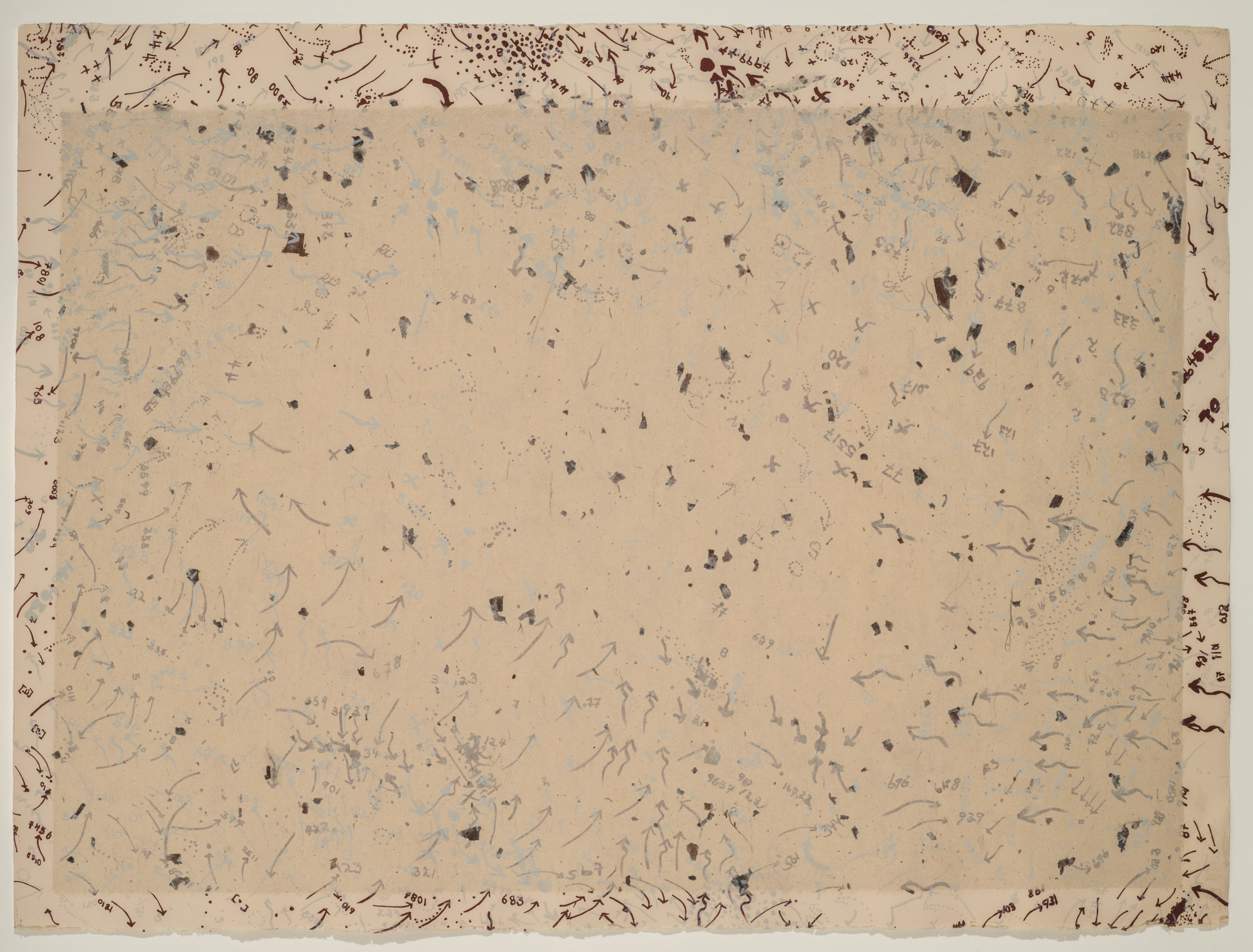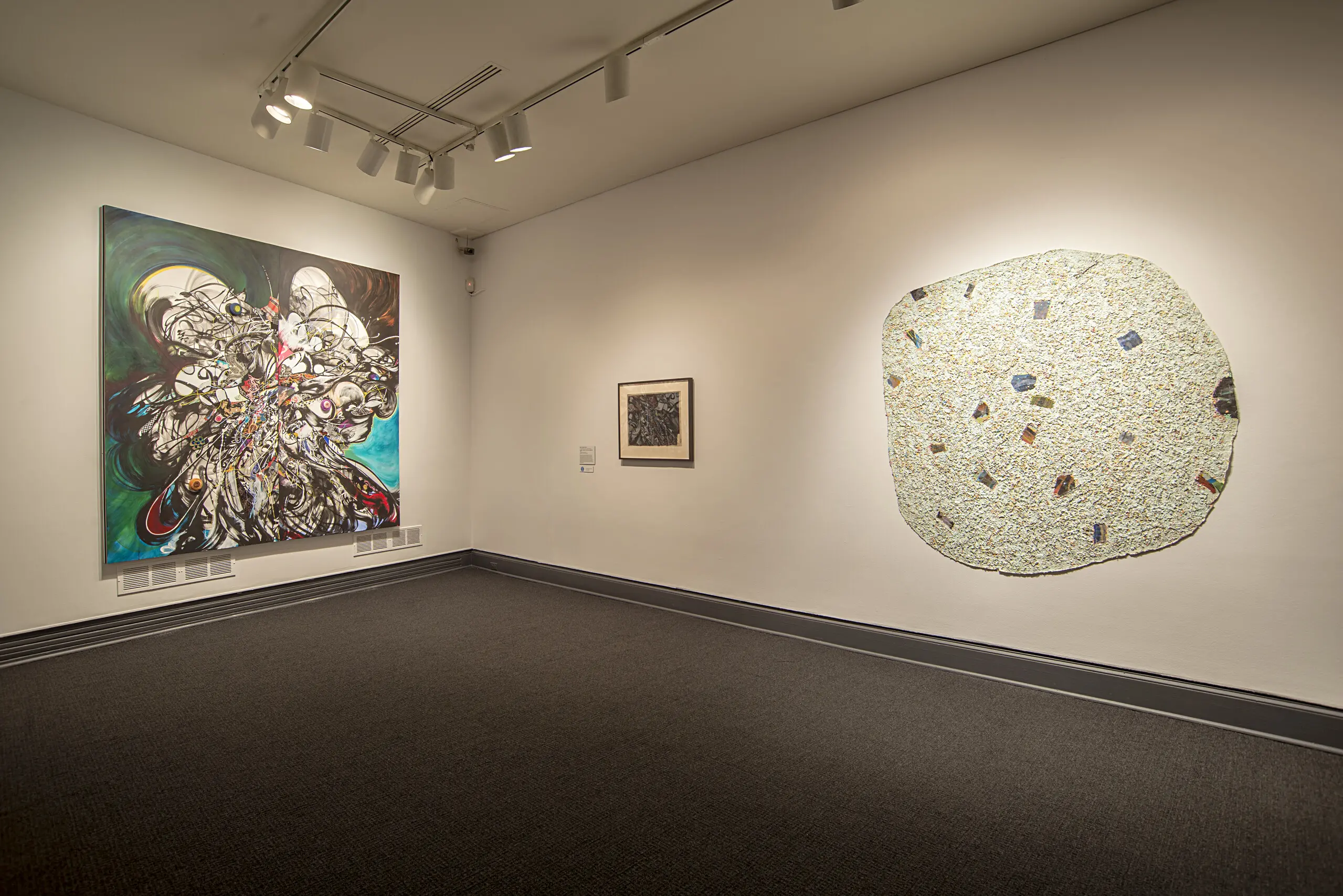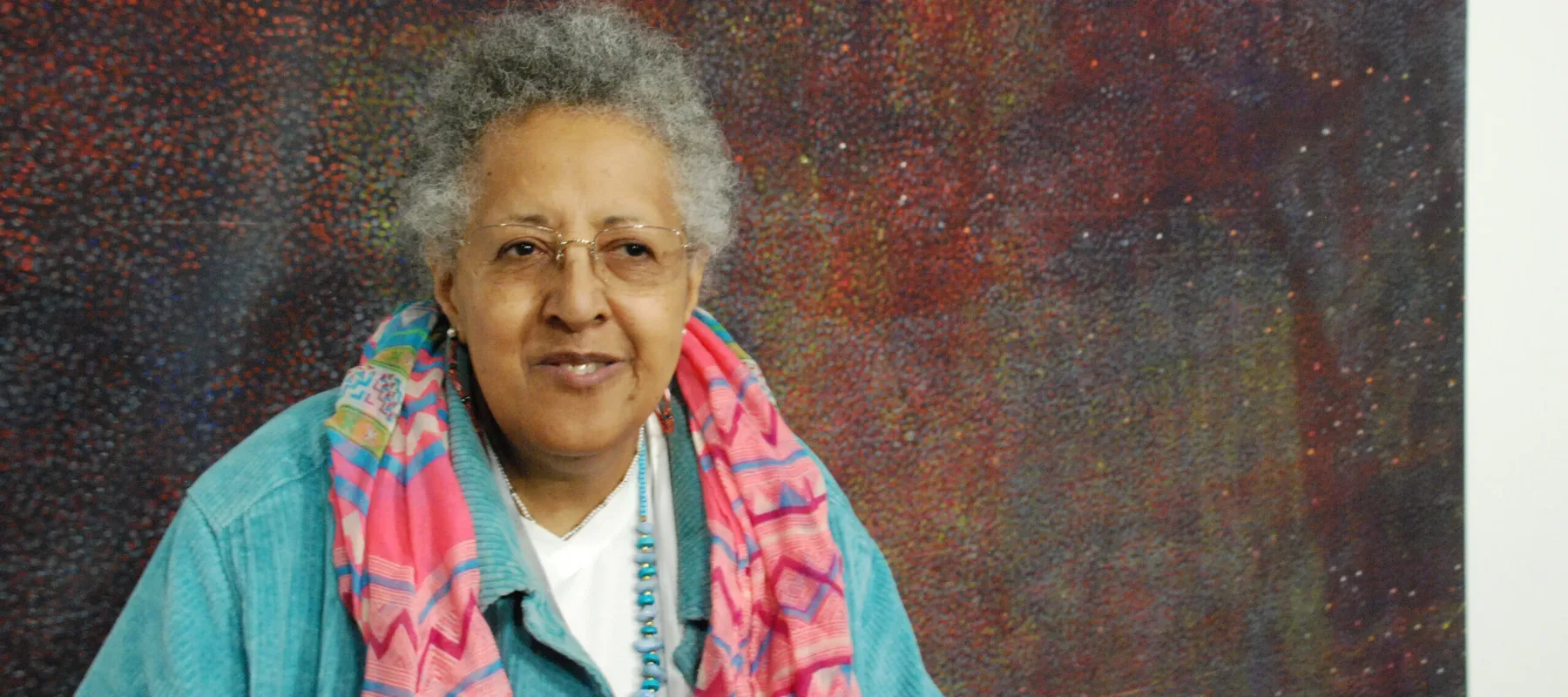Happy birthday to Howardena Pindell, who was born on this day in 1943! Impress your friends with five fast facts about the contemporary artist, whose work is part of NMWA’s collection.
1. See and Nurture the Potential
Pindell’s third grade teacher recognized the budding artist’s skills and encouraged her parents to immerse her in the art world of her native Philadelphia. They enrolled young Pindell in Fleisher Art Memorial classes, introducing her to a range of artists, and visited the Philadelphia Museum of Art.

2. Have a Bright Idea
In the 1970s, Pindell added a television to her windowless studio for light. Discovering that her acetate drawings of “nonsense numbers” and arbitrary arrows clung to the illuminated screen, she began photographing the resulting juxtaposition. Pindell created Untitled (1976), part of NMWA’s collection, at this time. The subtle chine collé veils her vector markings while its shape may allude to a TV screen.
3. Experiment with Materials
Pindell has long combined ordinary and extraordinary materials, including paper chads, perfume, and print ephemera such as postcards, in her mixed-media works. Some choices have been practical, like when she switched to acrylic paint after discovering she had an allergy to oil pigments. Others have been about personal preference. Reflecting on why she used glitter, Pindell said, “[It’s] fabulous!”

4. Commit to Memory
From October 2017 through January 2018, NMWA hosted Magnetic Fields: Expanding American Abstraction, 1960s to Today, which placed abstract works by multiple generations of Black women artists in context with one another. Pindell’s Autobiography: Japan (Shisen-dō, Kyoto) (1982), a visual diary of her travel experiences, was included. She made this after experiencing memory loss due to a car accident in 1979. In the work, Pindell literally and figuratively stitched together recollections.
5. Speak Up
Pindell’s work as an artist, curator, and educator has always been about speaking up for marginalized people. She advocated for artists of color as the only Black founding member of the female-focused A.I.R. Gallery and for workers’ rights by helping to establish the Museum of Modern Art’s labor union, all while enduring blatant racism and sexism.
